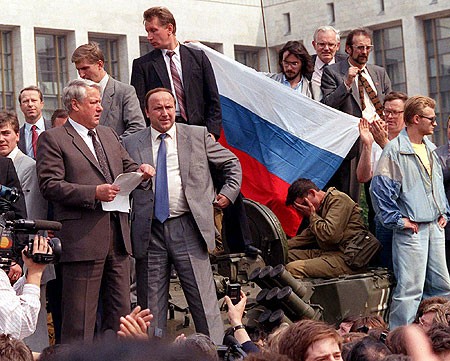The end of the Soviet Union in December 1991 marked a pivotal moment in global history, signaling the conclusion of the Cold War and reshaping the geopolitical landscape. George H.W. Bush, upon assuming the U.S. presidency in January 1989, initiated a strategic review of American policy towards Mikhail Gorbachev’s Soviet Union, moving cautiously rather than immediately embracing the approach of his predecessor, Ronald Reagan. This period of re-evaluation coincided with rapid and dramatic shifts within the Soviet bloc, setting the stage for the USSR’s eventual disintegration.
Gorbachev’s Reforms and Shifting Soviet Policy
Mikhail Gorbachev’s leadership in the Soviet Union was characterized by a departure from rigid communist orthodoxy. His policies of “Perestroika” (economic restructuring) and “Glasnost” (openness) aimed to revitalize the Soviet system, but inadvertently unleashed forces that accelerated its demise. A critical decision was Gorbachev’s choice to loosen the Soviet grip on Eastern European nations. This shift ignited a wave of democratic fervor across the region. The fall of the Berlin Wall in November 1989 became an iconic symbol of this liberation, quickly followed by the dismantling of communist regimes throughout Eastern Europe. While the Bush administration cautiously welcomed these developments, American policy remained largely reactive, careful not to destabilize Gorbachev’s position further.
Bush’s initial meeting with Gorbachev in Malta in December 1989 was crucial. They established a framework for significant arms control agreements, including the Strategic Arms Reduction Treaty (START) and the Conventional Forces in Europe treaty. Discussions also centered on the accelerating changes in Eastern Europe. Bush voiced support for Gorbachev’s reforms, hoping they would steer the USSR towards democratization and a market economy. However, these very reforms were sowing seeds of instability within the Soviet Union itself. Gorbachev’s introduction of multi-party elections and the establishment of a Soviet presidency, intended to modernize the political system, inadvertently weakened the Communist Party’s iron grip and fueled movements for greater autonomy and independence within the Soviet republics.
The Rise of Nationalism and Internal Pressures
The Soviet Union was a vast, multi-ethnic empire, and Gorbachev’s reforms inadvertently amplified long-suppressed nationalist sentiments. The elections of May 1990 highlighted the growing internal divisions. Boris Yeltsin, a charismatic figure advocating for faster democratization and economic reform, emerged as a powerful counterforce to Gorbachev. Yeltsin’s pluralist movement gained momentum, directly challenging the authority of the central Soviet government and the entrenched Communist elite who resisted Gorbachev’s reform agenda.
The Bush administration found itself navigating a complex situation. Despite the rising influence of Yeltsin, the U.S. initially chose to maintain its primary relationship with Gorbachev. He was perceived as a more predictable partner, and he had demonstrated a willingness to cooperate with the U.S. on international issues, including arms control and the Iraqi invasion of Kuwait. Gorbachev’s agreement to German reunification and a unified Germany’s membership in NATO, along with Soviet cooperation in responding to Saddam Hussein’s aggression, were significant concessions that aligned with U.S. interests.
However, Gorbachev’s domestic challenges were escalating. As Eastern European nations broke free from Soviet influence, republics within the USSR, particularly the Baltic States and regions in the Caucasus, began to assert their own demands for independence. In January 1991, Soviet military intervention in Lithuania and Latvia to suppress democratic uprisings drew international condemnation, including strong criticism from the Bush administration, signaling a growing unease with Gorbachev’s ability to manage the escalating internal crises.
US Policy and the Bush Administration’s Role
By 1991, the Bush administration reassessed its Soviet policy in light of the mounting turmoil. Three policy options were considered: continued support for Gorbachev to prevent Soviet collapse, shifting support to Yeltsin and the republics to manage a controlled restructuring or breakup, or conditional support for Gorbachev, using aid as leverage for more radical reforms. The administration was wary of completely abandoning Gorbachev. The Soviet Union possessed a massive nuclear arsenal, and further destabilizing Gorbachev risked jeopardizing arms control efforts.
Bush opted for a blended approach, combining elements of supporting Gorbachev while also increasing engagement with Yeltsin. To demonstrate continued support for Gorbachev and maintain momentum on arms control, Bush signed the START treaty at the Moscow Summit in July 1991. Simultaneously, recognizing the shifting political landscape, the Bush administration increased contacts with Yeltsin, hedging its bets and preparing for potential scenarios beyond Gorbachev’s continued leadership.
The Failed Coup and the Final Days of the USSR
The attempted coup in August 1991 by hardline Communists proved to be the catalyst for the Soviet Union’s final disintegration. The coup, aimed at reversing Gorbachev’s reforms, dramatically weakened his authority and propelled Yeltsin and the democratic forces to the forefront. Bush publicly denounced the coup as “extra-constitutional.” Gorbachev, though restored to his position after the coup failed, was politically mortally wounded. He resigned as head of the Communist Party, effectively separating party power from the Soviet presidency. The Communist Party’s Central Committee was dissolved, and Yeltsin banned party activities in Russia.
 Boris Yeltsin rallying support against the coup attempt in Moscow, August 1991, a pivotal moment in the collapse of the USSR, showcasing his defiance and leadership.
Boris Yeltsin rallying support against the coup attempt in Moscow, August 1991, a pivotal moment in the collapse of the USSR, showcasing his defiance and leadership.
In the aftermath of the failed coup, the momentum for independence became unstoppable. Ukraine and Belarus declared independence within days. The Baltic States, having previously declared independence, intensified their pursuit of international recognition. The Soviet Union was rapidly unraveling.
The Aftermath: Dissolution and a New World Order
Faced with the Soviet Union’s accelerating collapse, the Bush administration prioritized several critical objectives: preventing nuclear proliferation, mitigating ethnic conflict, and ensuring a stable transition to new political orders. On September 4, 1991, Secretary of State James Baker outlined five principles guiding U.S. policy towards the emerging republics: self-determination, respect for existing borders, democracy and rule of law, human rights protection, and adherence to international law. This framework signaled U.S. willingness to engage and assist the new republics contingent on their commitment to these principles.
Baker engaged in diplomatic efforts with both Gorbachev and Yeltsin to address the economic fallout and explore avenues for economic cooperation among the republics and Russia, aiming for a peaceful and managed political transformation. However, the centrifugal forces were too strong. In early December, Yeltsin and the leaders of Ukraine and Belarus met in Brest, effectively declaring the Soviet Union defunct and establishing the Commonwealth of Independent States (CIS).
The symbolic end came on December 25, 1991, when the Soviet flag over the Kremlin was lowered for the last time, replaced by the Russian tricolor. Mikhail Gorbachev resigned as Soviet president, leaving Boris Yeltsin as the president of an independent Russia. The world witnessed a relatively peaceful dissolution of a superpower, transforming the global political map. The Bush administration’s subsequent focus was on ensuring stability and security in Russia and the newly independent states. The U.S. recognized all 12 republics and established diplomatic relations, offering assistance to secure nuclear weapons and promote economic reforms through programs like the Nunn-Lugar Act and collaborations with international financial institutions. The collapse of the USSR was a multifaceted event, driven by internal reforms, nationalist pressures, economic weaknesses, and the actions of key political figures, ultimately reshaping the 20th century’s global order.

